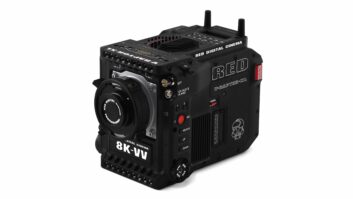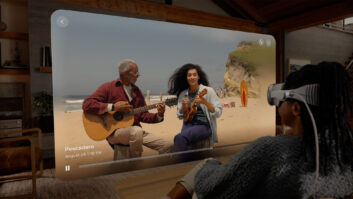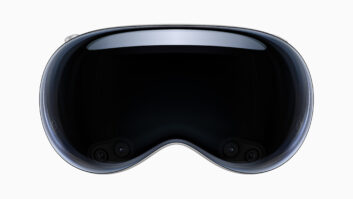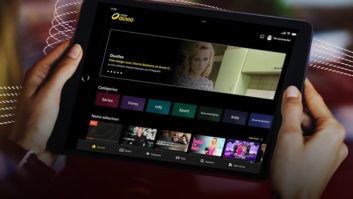The supreme master of buzz at NAB 07, even out-gunning Apple, was Red Digital Cinema, writes George Jarrett. The combination of its prototype 4K cameras Boris and Natasha, and a beguiling test film scripted and shot by Peter Jackson, had thousands of people queuing around its booth during the whole show. The effect was to put the management of 4K productions up there with the wide renaissance of MXF, production workflows, and ‘P2 two’ as show themes.
The Red One camera is incredibly lightweight compared to its commercial rivals, and (as seen) it uses Cooke lenses and records a compressed output to Firewire drives. Sony’s attractive new FL 23 (see TVBEurope March issue) will have one last adjustment (prism) before it ships in June, and Band Pro confirmed that the first 30 it gets from Sony would satisfy a lengthening waiting list.
Red’s more direct rival is the tried and truer scientific company Dalsa, which now has a much more modern looking camera in the Evolution. This would be a less awesome prospect if it did not come with a beautiful anamorphic lens that uses the entire image and the Flashmag, which records 20 minutes of raw 16-bit data into a Flash memory and outputs a scaled 2K file that could record to HDCAM SR and work within existing 2K workflow structures.
Cinematographer David Stump, who has used both the Red and Dalsa cameras for test shoots and wants to use them in tandem for an upcoming movie project, reckons that quality wise 4K falls between Vista Vision and 70mm. He believes Dalsa has an enormous optical advantage through its link to top lens designer Dan Sasaki.
“They are leading us down a path that everyone knows we want to go,” he said. “The high end always drives the market.”
After being bushwhacked and turned into a transcoding nightmare by four of the big vendors, MXF emerged in ruder, package passing health in part thanks to small outfits like OpenCube and MOG. Bemused users had quite happily used QuickTime while MXF was being untied from proprietary secondment.
There were upwards of 80 workflow demonstrations around the show, as companies were obliged to prove both openness and connectivity. By far the most stunning was Quantel’s introduction of Genetic Engineering, a powerful team working infrastructure that top Hollywood facility Fotokem ordered on first sight.
Multiple users can access the same clips coincidentally without copying or moving the media, and third-party Linux or Windows-based systems can live on the system just as happily as Quantel’s DI, VFX and grading tools because there are no proprietary APIs or SDKs involved. Genetic Engineering is based on Frame Magic, and consists of Sam, which ‘virtualizes’ the media, Max the assist station, and the GenePool. It will suit broadcast, post or DI applications.
Sony’s long expected announcement of a Flash media version of XDCAM – XDCAM EX – was one reason that talk of ‘P2 two’ resonated around the show. It has signed a deal with SanDisk to develop the spec, and talked about 8 Gig and 16 Gig cards at launch in October.
Ikegami and Toshiba joined the Flash memory fray, announcing a collaboration to produce a tape-less video production and editing system for NAB 08. The chosen media has no moving parts, is resilient to wide temperature fluctuations, and is highly impact and vibration-resistant. Sound familiar?
As many companies were showing technology to ‘take the edge off HD’ as those showing grain reduction in film in order to sharpen it – which created the feeling that users have a precise set of looks in mind.




